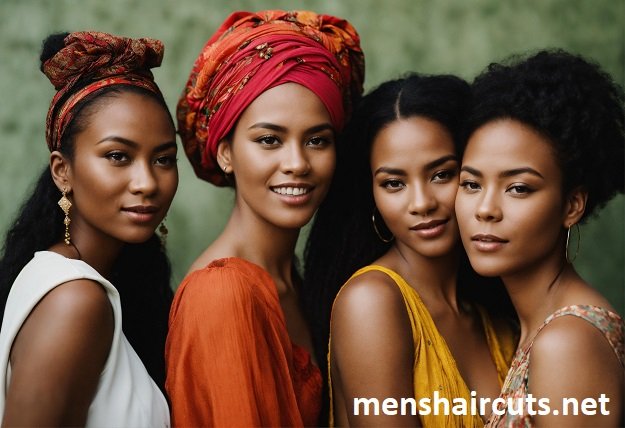Introduction
The textures of natural hair are stunning, and 4C hair 4c hair styles is distinguished by its tightly coiled pattern, which frequently calls for extra maintenance and styling methods. This thorough guide will inspire and educate you whether you’re wanting to style your 4C hair in new ways or are embracing your natural curls. We’ll look at a range of 4C hair styles, care advice, and tutorials to help you wear your curls with confidence, from everyday looks to special events.
Texture and Characteristics
4C hair is distinguished by its tightly coiled structure, which frequently takes the form of tiny, closely spaced curls or zigzag coils. Out of the four types of curl patterns (4A, 4B, and 4C), this one is the tightest. Stretching hair with this structure tends to make it appear shorter than it is since it shrinks more than other hair kinds. Contrary to popular belief, 4C hair is extremely flexible and can be dressed in a variety of ways with the appropriate methods and materials.
Essential Care Tips for 4C Hair
A mild and regular regimen is necessary for 4C hair care. To keep it healthy and vibrant, moisturizing it every day is essential. Maintaining hydration and avoiding breakage can be achieved by using deep conditioning treatments and shampoos without sulfates. Seek for goods that are high in natural oils that nourish and hydrate, such as shea butter or coconut oil. Split ends can be managed with regular cutting, which encourages overall hair health and development.
Protective Styles for 4C Hair
Braids, twists, and updos are examples of protective styles that reduce manipulation and shield hair from the elements. Because they require less frequent styling and manipulation, these styles also encourage hair development and length retention. It’s critical to often moisturize the scalp and hair when sporting protective styles, and to stay away from looks that strain or tense the hairline.
Twist Out and Braid Out Styles
Popular styling methods for 4C hair that improve curl definition and add volume are braid outs and twist outs. part your moist hair, use a style cream or gel, and tightly twist each part to create a twist out. For defined curls, let the twists dry completely before untangling them. Similar steps are followed for braid outs, except braiding is done rather than twisting. With the right care, these looks are adaptable and can be worn for several days.
Wash and Go Techniques for 4C Hair
Low-maintenance routines are great for people who love wash and go styles. First, use a moisturizing shampoo and conditioner to wash your hair. Evenly distribute a leave-in conditioner or curl defining lotion onto damp hair. To improve curl definition, let your hair air dry or use a diffuser set on low heat. To keep your curls in shape and bounce, spray your hair with water and apply a mild moisturizer once a day.
Updo Hairstyles for 4C Hair
Hairstyles in an updo provide grace and adaptability for professional and informal settings. Buns, twisted updos, and ponytails are some styles that highlight the inherent beauty of 4C hair. Accessorize your updo with hairpins, scarves, or flowers to give it a unique look and some flair. Choose weight-distribution styles that are not too tight or tugging on the hair to prevent breaking.
Natural Hair Accessories
Any 4C hairdo can be improved with accessories by giving it uniqueness and flair. Headbands, hair clips, silk scarves, and beads are among the available options. Use accessories as decorative additions in updos or as a means of securing twists or braids to add some flair to your everyday look. Hobbyists who enjoy doing crafts can make their own accessories with feathers, fabric, or beads for a one-of-a-kind appearance.
Heatless Styles for 4C Hair
For hair health maintenance and to reduce heat damage, use heatless style procedures. Heat is not needed to create curls and waves when using techniques like twist outs, braid outs, and flexi rod setups. Without using heat, stretching methods like African threading or banding can also lengthen hair. These techniques lessen frizz and promote the hair’s natural curl patterns in addition to shielding it from harm.
Iconic 4C Hair Styles
On red carpets and in daily life, celebrities with 4C hair have embraced their natural texture, encouraging others to follow suit. From striking afros to sophisticated updos, these celebrities highlight the grace and adaptability of 4C hair. Seek style inspiration and advice from celebs such as Lupita Nyong’o and Viola Davis to achieve glamorous looks on the red carpet using your own natural hair.
Diet and Lifestyle Tips
A balanced diet high in vitamins, minerals, and omega fatty acids is crucial for fostering strong, vivid hair since healthy hair originates from the inside out. Include foods high in omega-3 fatty acids, leafy greens, and salmon in your diet to promote healthy scalp and hair growth. Water consumption is also very important, so stay hydrated all day. Use products that shelter your hair from pollutants and UV rays, and wear protective styles to further protect it from environmental stressors.
Conclusion
As you experiment with the variety of 4C hairstyles, keep in mind that every hair type is different and requires customized attention and care. Whether you want sophisticated updos, protective styles, or twist outs, accepting your natural texture may be freeing and powerful. Try out several methods and products to see what suits you and your hair journey the best. You can obtain gorgeous 4C hair styles that highlight your inner beauty if you put in the time and effort.
FAQ
How can I define my curls with 4C hair?
Try out braided and twisted 4C Hair Styles with curl-enhancing products. Make sure your hair has enough moisture for the best definition of your curls.
What are some easy protective styles for 4C hair?
Cornrows, box braids, and twists are common protective hairstyles that need little upkeep and can preserve hair length.

